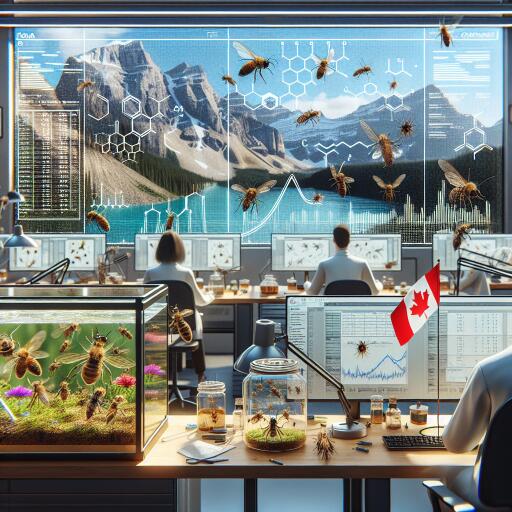
Canada AI Project Hopes to Help Reverse Mass Insect Extinction
A pioneering initiative in Canada is leveraging artificial intelligence to monitor and potentially reverse the alarming decline of insect species, a trend that poses a significant threat to global ecological balance. This innovative project, known as Antenna, aspires to collect and analyze data that could be instrumental in halting this fast-paced extinction.
Maxim Larrivée, the director of the Montreal Insectarium, highlights the urgency of the situation. He notes that the insect extinction rate surpasses that of any past mass extinctions by a factor of a thousand. This rapid decline poses a significant challenge for researchers attempting to gather accurate data, making it difficult to implement effective conservation strategies.
The Antenna initiative is underway at the Montreal Insectarium, where a striking transparent dome houses a variety of insect species, including butterflies, ants, and praying mantises. These creatures are observed and studied to gather vital insights. Additionally, solar-powered camera traps have been strategically placed in diverse locations—ranging from the Canadian far north to the verdant rainforests of Panama—to capture images of insects attracted to ultraviolet lights at ten-second intervals.
Larrivée emphasizes that innovations such as high-resolution cameras, affordable sensors, and AI-driven data processing promise to double the biodiversity information amassed over the past one and a half centuries in a mere two to five years. These advancements, which seem almost like a page out of a science fiction narrative, are vital for effective biodiversity conservation.
Unveiling the Secrets of Biodiversity
Scientists have raised alarms about an impending mass extinction event unrivaled since the era of the dinosaurs. Although the primary threats to insect populations—climate change, habitat destruction, and pesticide usage—are well-documented, quantifying the full scope of insect losses remains a formidable task.
Improved data collection is anticipated to facilitate the creation of decision-support tools, enabling governments and environmental advocates to craft conservation policies aimed at restoring biodiversity. With an estimated 10 million insect species, representing half of the planet’s biodiversity, a mere fraction—only a million—has been formally documented and analyzed by researchers.
David Rolnick, a specialist in biodiversity at the Quebec AI Institute and a key player in the Antenna project, suggests that artificial intelligence could significantly aid in cataloging the approximately 90 percent of insect species yet to be discovered. In a trial conducted in Panama, the AI systems identified 300 new species in just a week, illustrating the vast, untapped potential of this technology.
Advancing Research and Public Awareness
Antenna’s current AI research primarily focuses on moths, a diverse group of insects with over 160,000 species, recognized for their visual distinctiveness and fundamental role in the food chain. Rolnick sees this endeavor as a vital frontier in biodiversity monitoring.
The Montreal project embraces an open-source approach to its modeling efforts, inviting contributions from individuals worldwide to enrich the platform. The ultimate goal is to expand this methodology to identify new marine species and those that present challenges to agriculture.
Beyond research, the Montreal Insectarium employs its technological advancements for educational purposes. Visitors can capture images of butterflies in a vivarium setting and use an app to identify the precise species, fostering greater public engagement and awareness.
While the benefits of using AI for ecological preservation are clear, some caution remains. French tourist Camille Clement stressed the importance of meticulous application of AI technologies in environmental protection. Meanwhile, Julie Jodoin, director of Espace Pour La Vie, which includes the Insectarium among its five Montreal museums, asserts that knowledge of nature is essential for inspiring behavioral change in citizens.
As research continues, projects like Antenna are essential for expanding our understanding of the natural world and equipping society with the tools to safeguard it.





Leave a Reply